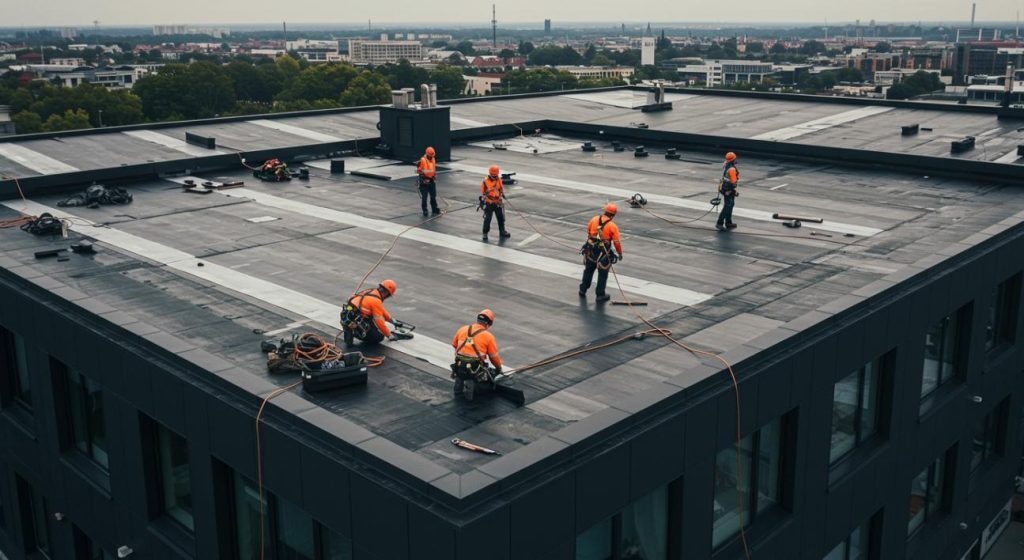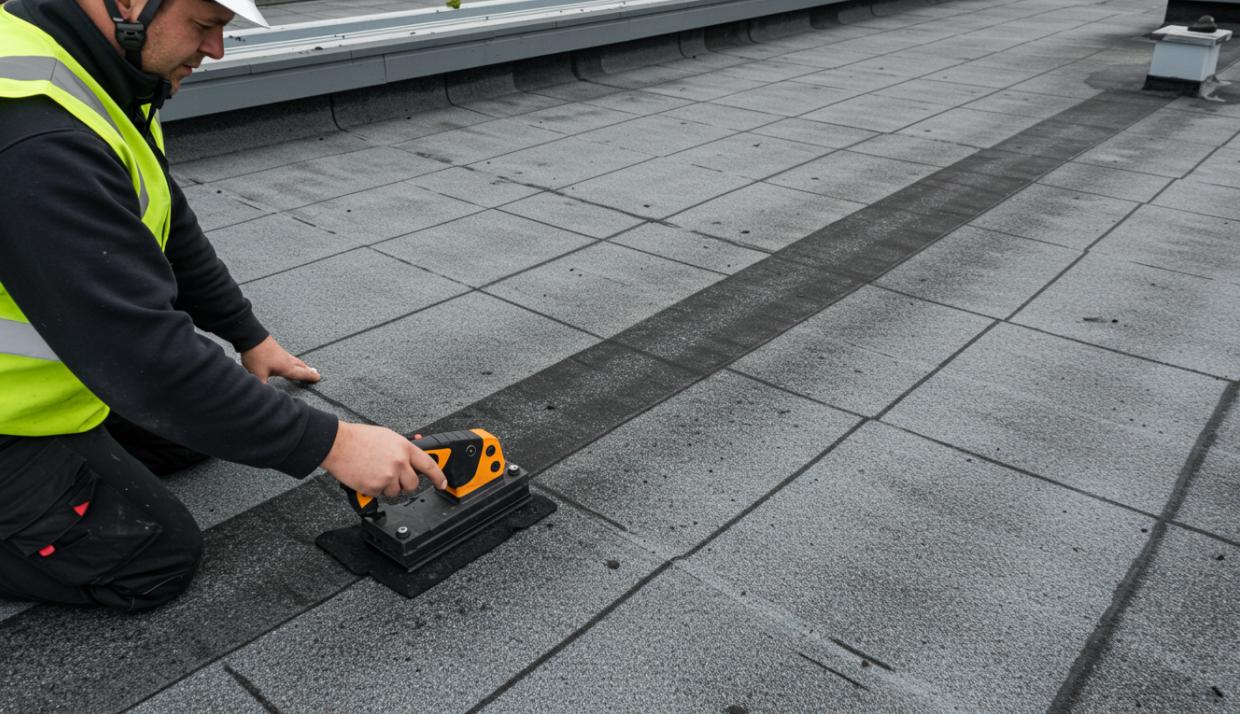
Flat Roof Maintenance: Tips and Tricks
Flat roofs can give your home or business a modern look, and while they typically last 10 to 20 years, regular care can extend their life significantly. Heavy rain and storms, common in places like South Florida, make being proactive essential. Learn our key tips for DIY flat roof maintenance. This will keep your roof in top shape and help you avoid expensive repairs later.
Why Regular Maintenance is Essential?
Routine care for your flat roof can extend its lifespan, allowing it to last up to two decades. This proactive strategy minimizes the risk of costly replacements. Regular checks and timely repairs ensure that small issues don’t morph into expensive problems later.
Conducting inspections is the first step in effective maintenance. Aim for at least two inspections per year, ideally in the spring and fall. These evaluations help identify potential issues before they escalate. After severe weather events, additional inspections are advisable, as heavy storms can inflict hidden damage.
While inspecting, be vigilant for visible signs of wear such as cracked seams, pooled water, and debris accumulation. Even seemingly minor issues, like blistering, can lead to significant leaks if not addressed promptly. Regularly monitoring these conditions contributes to the overall health of your flat roof.
Essential Maintenance Tasks
Several maintenance tasks can be performed with little more than basic tools and a keen eye. Understanding which maintenance rituals are vital ensures that your flat roof stays functional and aesthetically pleasing.
After storms, you may find debris on your roof. Leaves, twigs, and other materials can trap moisture, leading to rot and leaks. Clear the surface as soon as possible. Moreover, regular sweeps during fall prevent the buildup of organic matter, reducing the risk of mold and deterioration.
Flashings are designed to protect vulnerable areas where your roof intersects with vertical surfaces. Inspect these zones regularly for deterioration or looseness. If you spot any issues, replace or repair them to prevent water penetration and subsequent damage to your roof’s structure.
Addressing Drainage Problems
Effective drainage is essential for the longevity of your flat roof. Issues such as clogs can lead to ponding water, which accelerates material degradation.
Regularly check and clear your gutters, scuppers, and drains to ensure they function correctly. Installing screens or grates can further aid in keeping debris out, thus maintaining smooth water flow. If you experience chronic drainage problems, consider consulting a professional to evaluate your drainage system.
Ponding water indicates a lack of adequate drainage. If you notice standing water, make adjustments by investigating slope issues or investing in new drainage solutions. This maintenance approach is vital, especially during the rainy season.
Seasonal Maintenance Considerations
Each season presents unique challenges. Tailoring your maintenance tasks according to the time of year prolongs your roof’s integrity and overall performance.
In warmer months, check for any winter-related damage. Additionally, protective coatings can be applied to improve UV resistance and reduce heat absorption. This seasonal maintenance is perfect for extensive repair projects, as the weather is generally favorable.
Proper winter preparations involve checking insulation to prevent ice dams and ensuring clear drainage systems to combat ice and snow buildup. Regular checks during these seasons can save you from significant headaches when colder weather strikes.
DIY Maintenance vs. Professional Help
While many maintenance tasks are doable on your own, there are times when professional help is necessary.
Consider consulting a roofing expert for issues like substantial leaks, significant damage, or structural concerns. Professional roofers carry the tools and experience needed to address complex problems effectively and safely.
DIY maintenance often saves you money, but understand that professional services carry their price. Regular maintenance averages between $4 and $13 per square foot, while comprehensive repairs or replacements could range from $7 to $30. Weighing these costs against potential repairs can ensure that your roof remains in optimal condition.
For a clearer overview, here’s a typical maintenance schedule:
Investing time and effort into DIY maintenance not only protects your home’s integrity, but also promotes a sense of ownership. Check your roof regularly, address signs of wear, and keep it clean. Your commitment will result in savings and peace of mind.
Don’t hesitate to consult with professional roofing services, like Downtown Roofing Repairs, for guidance and recommendations tailored specifically to your roof’s needs.

